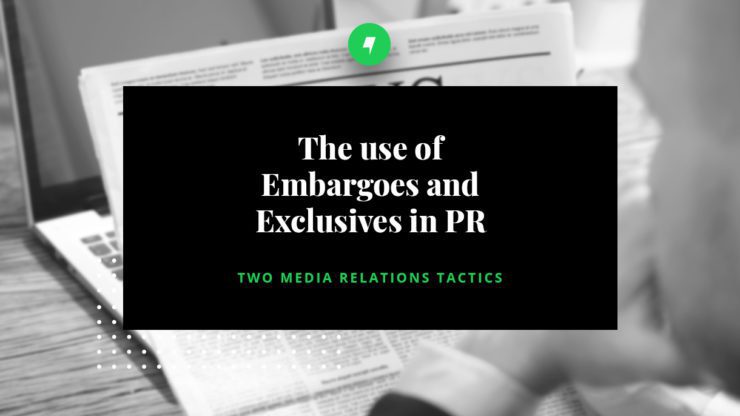Embargoes and exclusives are two media relations tactics that are often misunderstood by clients. Although PR professionals and reporters are generally on the same page about what each means, sometimes clients don’t fully understand why using one might be more beneficial than the other.
Below is an overview of some key information and best practices about embargoes and exclusives to help you determine if using these tactics are appropriate.
What is the difference between an embargo and an exclusive?
- Embargoes:
- An embargo is pitching reporters with a press release or piece of news prior to the distribution date. This strategy can be beneficial in that it gives reporters time in advance to prepare their story. With an embargo, the reporter must agree to it in writing before receiving the materials. Sending embargoed materials without an acknowledgement is a risk in that there is no mutual commitment in place.
- Exclusives:
- An exclusive is a press release or piece of news that is solely sent to one reporter/media outlet. With exclusives, reporters are typically granted earlier access to the news story and are often given the opportunity to be the first to “break the story.” If the news is big enough, the ability to break the news is attractive to reporters because it often gives their news outlet a leg up on their competitors.
The major difference between embargoes and exclusives is that with an exclusive, only one reporter/media outlet is given the opportunity to break the news. Once the news is broken, then other reporters and outlets may share it.
When and how should embargoes and exclusives be used?
There is no hard and fast rule when it comes to using either approach, but the key takeaway is to share news that is exclusive and newsworthy. Some additional tips include:
- Share exclusive assets:
- Provide images, quotes and/or spokespeople available for interviews if the reporter is interested.
- Don’t overshare:
- When offering an exclusive, it is important to send it to one reporter at a time to gauge interest. Offering it to many media outlets can cause confusion and tarnish you and your client’s reputation with that reporter.
- Use the tactic sparingly:
- Not every piece of news that a client shares is worthy of an embargo or exclusive. Be selective and strategically decide what to send.
Overall, when planning a media strategy for an announcement, always consider the goal, then think about if an embargo or exclusive would be useful to help reach the goal. If handled correctly, both are excellent PR tactics.
Posted In Public Relations
 Emily Kanter
Emily Kanter 